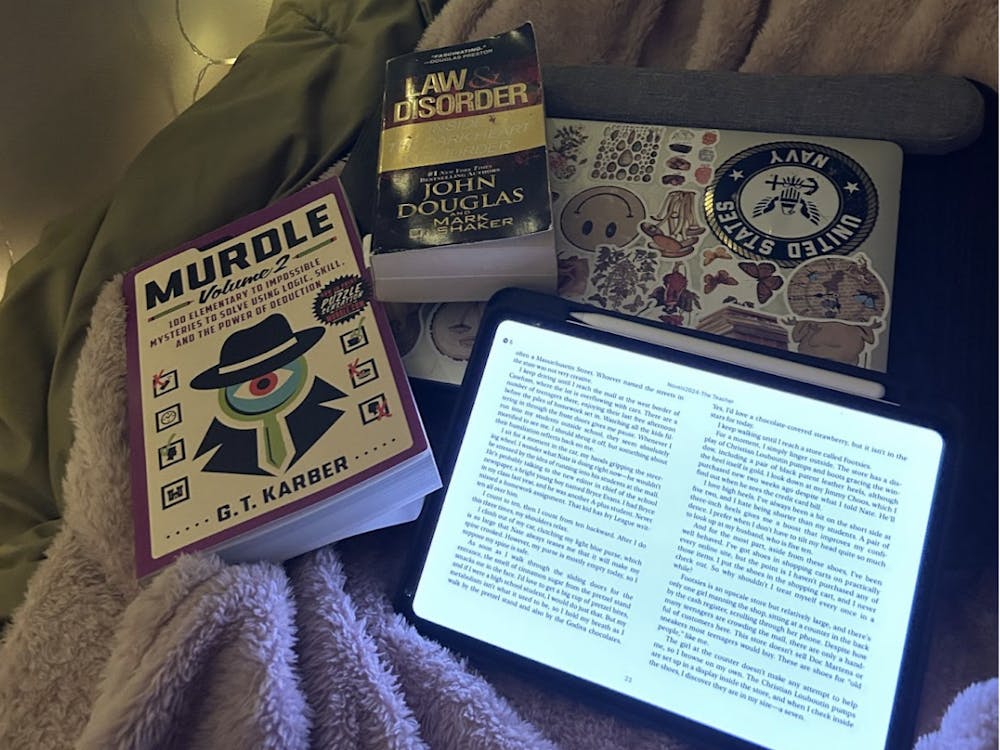One-lung ventilation (OLV), a practice required for many chest procedures, involves the ventilation of one lung and the deflation of the other but has many risks. Amid the height of the pandemic, the OnPoint Ventilation team — initiated as part of the Biomedical Engineering (BME) Design Team program — embarked on a mission to invent a safer instrument for this critical procedure, resulting in the Bronchosleeve, which will be presented at this year's Collegiate Inventors Competition in Washington, D.C.
The Bronchosleeve is a catheter used during OLV. It simplifies the procedure due to its small diameter and ability to visualize the inside of the lungs better. While previous gold standards like the double-lumen tube and bronchial blockers are easily dislodged into the trachea and have to be switched out for other devices, the Bronchosleeve can overcome these obstacles.
Hopkins alumni Sneha Batheja, Charlie Almoney, Ria Jha, senior Arijit Nukala and juniors Alexandra Gorham, Nina Nair and Krisha Thakur established OnPoint Ventilation two years ago. Still, every member found their way to the team in different ways. For Batheja, the team lead, it was her time working in the intensive care unit (ICU) during the peak of the COVID-19 pandemic when patients on ventilators faced low chances of recovery.
“COVID highlights deficiencies in the field of pulmonology and I think this project was very well-defined as a lot of the after-effects of being on a ventilator and going through surgery have to do with the technology they use. The core of this project is improving technology that hasn't been improved in 60 years,” she said in an interview with The News-Letter.
Upon investigation, it was clear that the field was ripe for innovation, and with the help of mentors including Dr. Viachaslau Barodka, Dr. Brijen Joshi — who provided knowledge of medical device startups and business-forward acumen — and Dr. Elizabeth Logsdon — who aided in the design process — OnPoint Ventilation was motivated to forge ahead and devise an improved device for OLV.
Nukala emphasized how vital it was to put in the effort to research the problem. This involved speaking to people in the medical field who conducted this procedure and the problems they faced with the current widely-used instruments.
“[We talked] to our clinical advisors who are thoracic surgeons and anesthesiologists at Johns Hopkins Medicine and put the legwork in to read papers and do necessary research to size up the problem. All of those things really showed us the worth of the project,“ she said in an interview with The News-Letter. “Before joining, we had no idea exactly how many patients were affected by [ventilation procedures] per year, and what we found is it's over 600,000 — which is an enormous, almost unfathomable number.”
Before prototyping, the team dissected the root of the problem, figuring out what the existing industry standards lacked. The Bronchosleeve effectively resolves problems associated with the current devices, such as insertion-related bruising and susceptibility to dislodgement. Gorham explained to The News-Letter that feedback was crucial for this development.
“There were a lot of other clinicians and anesthesiologists who were working with us, and we would meet with them a couple of times a semester, just bounce our ideas off of them and get feedback,“ Gorham shared. “That was incredibly valuable and it was such an interesting process to hear about things we would never have thought of on our own since we weren’t the ones using these devices day in and [day] out.”
OnPoint Ventilation faced some of its biggest challenges during prototyping. Since they were working just as the world was recovering from the pandemic, adaptability was key and Nair voiced that resourcefulness was necessary. One example she discussed was using food-grade silicone — rather than medical-grade silicone — while prototyping in order to continue development despite the challenges posed by COVID-19.
Next month, OnPoint Ventilation will present the Bronchosleeve at the Collegiate Inventors Competition as one of the five finalist undergraduate teams in the U.S. In the past semester, they have achieved notable successes, winning the first prize in Medical Technology and Life Science Ventures II at Hopstart — a business plan competition hosted by the Center for Leadership Education — and the Schulze Entrepreneurship Challenge Grand Championship at e-Fest — a three-day event with 25 participants chosen from a national submission pool.
They have also received numerous grants from the BME department and the Department of Anesthesiology. Sneha highlighted the team's perspective on the Collegiate Inventors Competition as a pivotal opportunity for the future of the Bronchosleeve.
“It's less about the money and more about the access to amazing networks in terms of peers that are doing really incredible things in medicine, agriculture and food science,“ she said. “The other side of that is we really hope to meet some amazing mentors who can continue to advise us not only about our product but also about how we can think about pushing our idea through the patent office, which is something that we see as a really instrumental stuff to actually getting our product in the hands of clinicians.”





